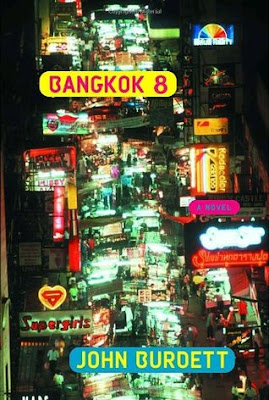For the next couple of book sale posts, be prepared for more variety than usual. My son reads mostly fantasy, science fiction, and nonfiction. My husband reads all types of fiction, but leans toward nonfiction.
The Planned Parenthood Book Sale ran from September 16th through September 25th, over two weekends. We visited five times.
This post showcases some of the books that my son found at the book sale, and there are a lot of gorgeous covers here.
Zero World by Jason M. Hough (578 pages)
From the book description at Goodreads:
Technologically enhanced superspy Peter Caswell has been dispatched on a top-secret assignment unlike any he’s ever faced. A spaceship that vanished years ago has been found, along with the bodies of its murdered crew—save one. Peter’s mission is to find the missing crew member, who fled through what appears to be a tear in the fabric of space. Beyond this mysterious doorway lies an even more confounding reality: a world that seems to be Earth’s twin.
I like stories that merge spying and science fiction, and a parallel Earth could be interesting.
The Merciful Crow by Margaret Owens (369 pages)
This is a YA Fantasy with a gorgeous cover. I liked the description and I love the cover, and there is a cat named Barf.
From the cover of the book:
Fie abides by one rule: look after your own. Her Crow caste of undertakers and mercy-killers takes more abuse than coin, but when they’re called to collect royal dead, she’s hoping they’ll find the payout of a lifetime.
When Crown Prince Jasimir turns out to have faked his death, Fie’s ready to cut her losses—and perhaps his throat. But he offers a wager that she can’t refuse: protect him from a ruthless queen, and he’ll protect the Crows when he reigns.
Variable Star by Robert A. Heinlein and Spider Robinson (300 pages)
This is a 2006 science fiction novel by American author Spider Robinson, based on a novel outline by the late Robert A. Heinlein.
From the back of the book:
When Joel Johnston asks Jinny Hamilton to marry him, he believes he is entering an ordinary union. Then she reveals that she is the granddaughter of the wealthiest man in the solar system, and any man who marries her will be groomed for a place in the vast Conrad empire and sire a dynasty to carry on the family business....
Daunted by the prospect of such a future, Joel flees—and awakens on a colony ship heading out into space, torn between regret over his rash decision and his determination to forget Jinny and make a life for himself among the stars.
Artful by Peter David (276 pages)
This fantasy novel tells the further adventures of Jack Dawkins, the Artful Dodger, from Charles Dickens' Oliver Twist. It is a few years later in his life, and in this version there are vampires and a plot to overthrow the British monarchy.
Another book with a very impressive cover.
The Space Between Worlds by Macaiah Johnson (320 pages)
From the summary at Goodreads:
Multiverse travel is finally possible, but there’s just one catch: No one can visit a world where their counterpart is still alive. Enter Cara, whose parallel selves happen to be exceptionally good at dying—from disease, turf wars, or vendettas they couldn’t outrun. Cara’s life has been cut short on 372 worlds in total.
On this Earth, however, Cara has survived. Identified as an outlier and therefore a perfect candidate for multiverse travel, Cara is plucked from the dirt of the wastelands. Now she has a nice apartment on the lower levels of the wealthy and walled-off Wiley City.
Chronicles of the Black Company by Glen Cook (700 pages)
This omnibus edition comprises The Black Company, Shadows Linger, and The White Rose―the first three novels in Glen Cook's Black Company fantasy series.
I have read the first novel in this series (my review here). It combines elements of epic fantasy and dark fantasy as it follows the story of an elite mercenary unit that serve the Lady, ruler of the Northern Empire. Now I can read the second novel in this edition.
Radiance by Catherynne M. Valente (420 pages)
From the summary at Goodreads:
Severin Unck's father is a famous director of Gothic romances in an alternate 1946 in which talking movies are still a daring innovation due to the patent-hoarding Edison family. Rebelling against her father's films of passion, intrigue, and spirits from beyond, Severin starts making documentaries, traveling through space and investigating the levitator cults of Neptune and the lawless saloons of Mars. For this is not our solar system, but one drawn from classic science fiction in which all the planets are inhabited and we travel through space on beautiful rockets. Severin is a realist in a fantastic universe.
Told using techniques from reality TV, classic film, gossip magazines, and meta-fictional narrative, Radiance is a solar system-spanning story of love, exploration, family, loss, quantum physics, and silent film.
The Changewinds by Jack L. Chalker (820 pages)
My son introduced me to Jack Chalker's books in 2005, and I read several of the books in the Well of Souls series.
This book is an omnibus edition of the three books in the Changewinds series, including When the Changewinds Blow (1987), Riders of the Winds (1988) and War of the Maelstrom (1988). From what I can glean from descriptions, I think the stories are a blend of science fiction and fantasy.
Are you familiar with any of these books or authors?





































